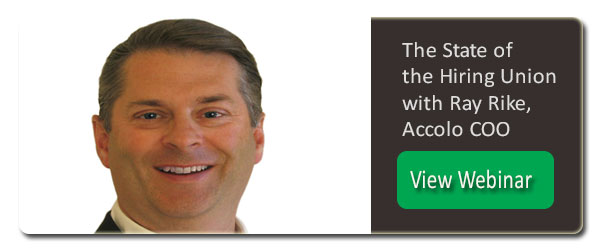 In the first part of our series on hiring and recruiting statistics, we covered a few of the latest statistics reflecting the state of hiring in the United States. Although three-fourths of organization said they were planning to hire this year, and that more job openings are being advertised online than in 2010, filling those openings effectively and hiring efficiently are still big challenges. In the second part of this three-part series, we have three of the latest trends on hiring costs and recruiting efficiencies. Knowing these trends should help you overcome the challenges of hiring effectively and efficiently by illustrating areas where you can improve your recruiting process.
In the first part of our series on hiring and recruiting statistics, we covered a few of the latest statistics reflecting the state of hiring in the United States. Although three-fourths of organization said they were planning to hire this year, and that more job openings are being advertised online than in 2010, filling those openings effectively and hiring efficiently are still big challenges. In the second part of this three-part series, we have three of the latest trends on hiring costs and recruiting efficiencies. Knowing these trends should help you overcome the challenges of hiring effectively and efficiently by illustrating areas where you can improve your recruiting process.
Cost Per Hire Versus Recruiting Cost Ratio
Ray Rike, chief operations officer with Accolo, said that the cost per hire (the formula is shown below) can range between $2000 and $5000. He says this metric is misleading because the final number isn't representative of every positions you may have filled in the time period.

"A $5000 cost per hire might be really good for a senior software developer," he said. "But might be really poor for an hourly worker in a manufacturing plant or for an entry level administrative clerical worker."
Rike suggests that organizations measure the recruiting cost ratio instead of cost per hire, which is much more accurate in determining your cost per hire. Below is the formula for calculating your recruiting cost ratio.

Your recruiting costs is the sum of both your external and internal costs, just like in the cost per hire formula. Note that the compensation is the total of the first-year compensation of those hired during the time period you are tracking. Rike says the recruiting cost ratio is a percentage. Over the past 10 years, across all industries, the average recruiting cost ratio is about 10.8 percent.
Cycle Time Versus Days to Present
Cycle time is a popular metric for recruiting efficiency, as it measures the time it takes to make the hire or to fill a position. Rike says this metric isn't a very good one because it doesn't offer much insight into your recruiting process. It's tough to tell from your time to hire where you can improve your recruiting efficiency, or which aspects are functionally optimally or aren't performing against best-in-class benchmarks.
Rike offers a better metric for recruiting efficiency: days to present. Days to present is the time from the day a job is first marketed externally to the day the candidate who is ultimately hired is first presented as a qualified candidate to the hiring manager. Based on this definition, it does not include or measure internal hires.
"This is really an optimal measure of recruiting, or sourcing, efficiency," Rike said. After the days to present are calculated, the next step is consider the days to accept. Days to accept is the time from the day a job is first marketing externally to the day the hired candidate accepts the offer. Days to accept does include the days to present.
"This [metric] provides you the ability to measure interview cycle time efficiency," Rike said. "It really looks at from the time the candidate has been introduced to the hiring manager... until the offer is extended and accepted.
Essentially cycle time is split into three separate metrics instead of one big metric. The last metric to consider is days to start, which is the time from the day a job is first marketing externally to the day the hired candidate starts his/her first day of employment.
The Signal to Noise Ratio
The signal to noise ratio, also known as the noise to hire ratio, measures how time you are wasting filtering through the "noise" coming from your candidate sources. The noise is defined as unqualified applicants to your open positions. The formula for calculating the signal to noise ratio for a particular candidate source is shown below.
 The final ratio will be a percentage and it could be either positive or negative. A negative percentage means that the candidate source isn't a great source for hires, as more candidates are unqualified than qualified. The smaller the negative number (-37 is smaller than -0.4), then the more noise that candidate source is contributing to your applicant pool and to your hiring inefficiencies.
The final ratio will be a percentage and it could be either positive or negative. A negative percentage means that the candidate source isn't a great source for hires, as more candidates are unqualified than qualified. The smaller the negative number (-37 is smaller than -0.4), then the more noise that candidate source is contributing to your applicant pool and to your hiring inefficiencies.















